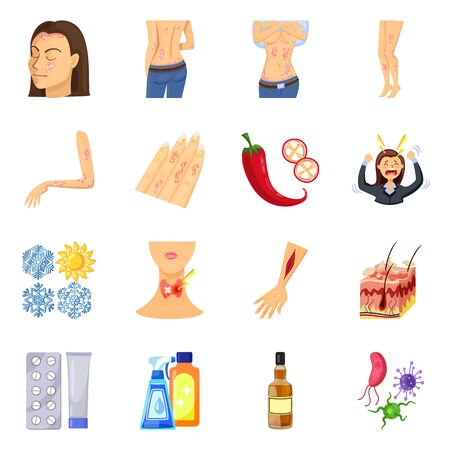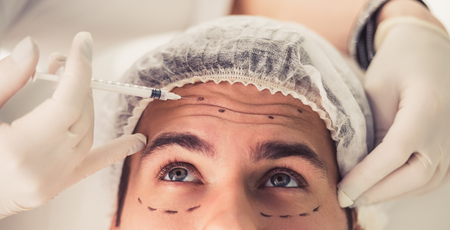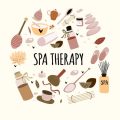Introduction: Shifting Notions of Beauty in the UK
The concept of beauty has never been static, especially within the diverse and ever-evolving landscape of the United Kingdom. As we delve into redefining beauty standards, it is crucial to acknowledge how these ideals are continuously shaped by both global influences and distinctly British perspectives. In recent decades, the UK has become a vibrant mosaic of cultures, ethnicities, and backgrounds, all contributing to a dynamic reimagining of what is considered beautiful. With multiculturalism now firmly embedded in British society, traditional notions of attractiveness—often rooted in Eurocentric ideals—are being questioned and expanded. This shift is not merely cosmetic; it reflects deeper social changes as communities interact, blend, and learn from one another. By exploring the evolution of beauty standards through a uniquely British lens, we can begin to appreciate how genetic diversity and cultural heritage collectively inform our aesthetic preferences. This article aims to investigate how genetics play a role in shaping these preferences across ethnicities, setting the stage for a more inclusive understanding of beauty in modern Britain.
Genetics and Physical Appearance
Genetic diversity plays a fundamental role in shaping the physical traits that are commonly associated with beauty standards across the world. Every individual inherits a unique combination of genes from their parents, and these genetic variations manifest as differences in skin tone, facial structure, and hair type among various ethnic groups. Understanding the genetic basis for these traits not only challenges universal ideals of beauty but also highlights the natural variation present within humanity.
How Genes Influence Key Physical Traits
The genes responsible for visible features such as skin pigmentation, eye shape, nose structure, and hair texture have evolved over thousands of years in response to diverse environments. This means that certain traits become more prevalent within specific populations due to adaptation and historical migration patterns. For instance, genes like MC1R influence skin pigmentation, while EDAR affects hair thickness and texture.
Physical Trait Variation Across Ethnicities
| Trait | Common Genetic Variants | Examples by Ethnicity |
|---|---|---|
| Skin Tone | SLC24A5, MC1R | Lighter tones common in Northern Europeans; darker tones in Sub-Saharan Africans; olive tones in Mediterranean populations |
| Hair Type | EDAR, TCHH | Straight hair in East Asians; curly hair in Africans; wavy or straight hair in Europeans |
| Facial Features | PAX3, DCHS2 | High nasal bridges in Europeans; broader noses in many African populations; epicanthic folds common among East Asians |
Beyond Genetics: The Interplay with Environment and Culture
While genetics set the foundation for physical appearance, environmental factors such as sun exposure and nutrition also play a part. Furthermore, cultural perceptions influence which traits are deemed attractive or desirable at any given time. In Britain, for example, there is an increasing appreciation for diversity in appearances, reflecting both a multicultural society and an evolving understanding of beauty rooted in science rather than stereotypes.

3. Cultural Influences on Aesthetic Preferences
The United Kingdom is renowned for its rich tapestry of cultures, which brings a fascinating complexity to the perception and pursuit of beauty. While genetics provide a foundational blueprint for features such as skin tone, hair texture, and facial structure, these inherited traits do not operate in isolation. Instead, they intersect dynamically with cultural ideals and societal narratives that shape what is considered aesthetically pleasing within various communities.
In British society, where diversity is both celebrated and ever-evolving, aesthetic preferences are often a reflection of both heritage and cultural context. For instance, traditional notions of beauty within Afro-Caribbean communities may emphasise fuller lips or natural hair textures—traits rooted in genetic inheritance—yet these preferences are continually reshaped by broader social influences ranging from media representation to historical experience.
Similarly, South Asian communities across the UK might uphold certain standards regarding complexion or eye shape, with these ideals tracing back through generations but also being informed by contemporary British culture. The interplay between genetics and cultural expectation means individuals often negotiate their self-image at the intersection of family heritage and the prevailing trends in wider society.
This cultural negotiation can be seen in how beauty trends migrate between communities. For example, the growing appreciation for diverse body types or the increased visibility of non-Western fashion aesthetics in high street shops reflects both a genetic variety and a conscious shift in collective attitudes. Such changes underscore how cultural values can either reinforce or challenge genetically-influenced standards, prompting new understandings of beauty that better reflect the UK’s multicultural reality.
Ultimately, analysing aesthetic preferences within the UK requires a dual lens: one that acknowledges inherited physical traits and another that recognises the significant impact of community values, social history, and media portrayal. Together, these forces create a uniquely British mosaic of beauty standards—constantly negotiated, redefined, and celebrated across ethnic lines.
Media Representation and the British Beauty Ideal
In the UK, media representation plays a pivotal role in both reinforcing and challenging prevailing beauty standards, many of which are subtly influenced by genetic predispositions. Television, advertising campaigns, and popular culture—ranging from glossy magazines to social media influencers—collectively shape public perception of what is deemed attractive. Historically, the British beauty ideal has often leaned towards Eurocentric features, such as fair skin, specific facial symmetry, and certain body proportions. These preferences, while partly rooted in genetics, have been amplified or moderated by the images and narratives projected through media channels.
The Interplay Between Media and Genetic Diversity
With increasing multiculturalism in Britain, there is a growing recognition of the nations genetic diversity. Yet, mainstream media sometimes lags behind societal change, favouring a limited range of appearances that do not fully reflect the population’s ethnic mosaic. The table below illustrates how various forms of media either promote or challenge genetic-based beauty standards:
| Media Type | Promotion of Genetic-Based Standards | Challenge to Genetic-Based Standards |
|---|---|---|
| Television & Film | Predominance of actors with Eurocentric features | Increasing casting of diverse ethnic backgrounds |
| Advertising | Frequent use of models conforming to traditional ideals | Campaigns celebrating natural hair and varied skin tones |
| Social Media | Influencers using filters promoting uniform looks | User-driven content embracing unique genetics |
| Fashion Magazines | Highlighting conventional facial symmetry and body shape | Covers featuring models from underrepresented groups |
The Influence of Advertising Strategies in Britain
British advertising agencies have faced increasing scrutiny for their role in perpetuating narrow beauty ideals. However, some brands now actively seek to disrupt this pattern by featuring models with diverse backgrounds and genetic traits—such as freckles, different hair textures, or non-traditional body shapes. This shift not only reflects changing social attitudes but also acknowledges the scientific understanding that beauty is multifaceted and influenced by a broad spectrum of genetic factors.
Cultural Shifts and Public Perception
The dialogue around beauty standards in the UK is gradually shifting towards inclusivity, aided by vocal public demand for authentic representation. While traditional media may still exert influence over aesthetic norms, digital platforms empower individuals to showcase their inherited traits with pride. As media becomes more representative of Britain’s genetic landscape, it holds the potential to redefine beauty ideals in a way that genuinely celebrates diversity across all ethnicities.
5. Moving Towards Inclusivity in British Beauty Culture
In recent years, the United Kingdom has witnessed a significant transformation in its beauty culture, reflecting a broader understanding of what it means to be beautiful. Traditionally, British beauty standards were shaped by narrow ideals—often Eurocentric and excluding the vast ethnic diversity present across the UK. However, there is now a noticeable shift towards more inclusive aesthetics within fashion, media, and everyday life. This change is not merely cosmetic; it is rooted in a deeper awareness of genetics and the unique features that various ethnic backgrounds bring to the table.
The British fashion industry, for instance, has gradually begun to embrace models representing a wider spectrum of genetic heritages. Brands and designers are increasingly showcasing individuals with natural Afro-textured hair, varied skin tones, and distinctive facial structures. These choices challenge longstanding norms and acknowledge that beauty is not confined to a single template but is instead enriched by genetic diversity.
Media representation has also evolved. British television programmes and advertising campaigns now feature presenters, actors, and influencers from diverse backgrounds—not as tokens, but as central figures shaping public perception. The celebration of different body types, hair textures, and facial features sends a powerful message: beauty can be found in every corner of the UK’s multicultural landscape. This inclusivity helps dismantle stereotypes and encourages self-acceptance among younger generations who may previously have felt marginalised.
On an everyday level, conversations about beauty in Britain are becoming more nuanced. Social media platforms empower individuals to share their personal stories and genetic heritage with pride. Communities once underrepresented are finding spaces to express their aesthetic preferences and educate others about their cultural standards of beauty. This grassroots movement supports a more holistic appreciation of what genetics contribute to our sense of attractiveness.
The journey towards inclusivity is ongoing—and not without challenges—but the UK’s growing acceptance of genetic diversity in beauty standards marks a progressive step forward. As we redefine what it means to be beautiful through the lens of genetics and ethnicity, British society sets an example for other nations striving to move beyond conventional ideals towards a truly representative celebration of human aesthetics.
6. Implications for the Future: Genetics, Identity, and Diversity
As we deepen our understanding of genetics and its role in shaping aesthetic preferences across different ethnicities, British society stands at a crossroads. This knowledge invites us to reflect critically on long-held beauty standards and to question who gets to define what is considered attractive. Embracing genetic diversity not only challenges outdated ideals but also encourages a more inclusive and representative vision of beauty—one that mirrors the multicultural reality of modern Britain.
The Power of Scientific Awareness
Advancements in genetics provide us with scientific evidence that beauty is not universal, nor should it be narrowly prescribed. The unique genetic tapestry found within Britain’s population underscores the futility of a ‘one-size-fits-all’ approach to attractiveness. By fostering public awareness around these findings, we can begin to dismantle biases rooted in colonial history and Eurocentric norms, making room for new narratives that celebrate difference rather than conformity.
Identity and Self-Acceptance
For individuals navigating their own identities within Britain’s diverse society, understanding the genetic basis for physical features can be empowering. Recognising that beauty is multifaceted and influenced by ancestral heritage can foster self-acceptance among those who may have previously felt marginalised or excluded by mainstream standards. In this way, science becomes a tool for personal affirmation as well as social change.
Shaping a More Inclusive Future
Looking ahead, the integration of genetics into discussions about beauty opens up opportunities for education, policy-making, and cultural representation. Schools, media outlets, and brands all have a role to play in promoting diverse images and stories that reflect the true breadth of British society. By doing so, we not only enrich our collective identity but also lay the groundwork for future generations to appreciate beauty in all its forms—rooted in authenticity rather than imposed ideals.
Ultimately, redefining beauty through the lens of genetics and diversity has profound implications for how we see ourselves and each other. It offers a hopeful path forward: one where every individual can find value in their uniqueness, and where British society as a whole can thrive by embracing—not erasing—the rich mosaic of its people.


